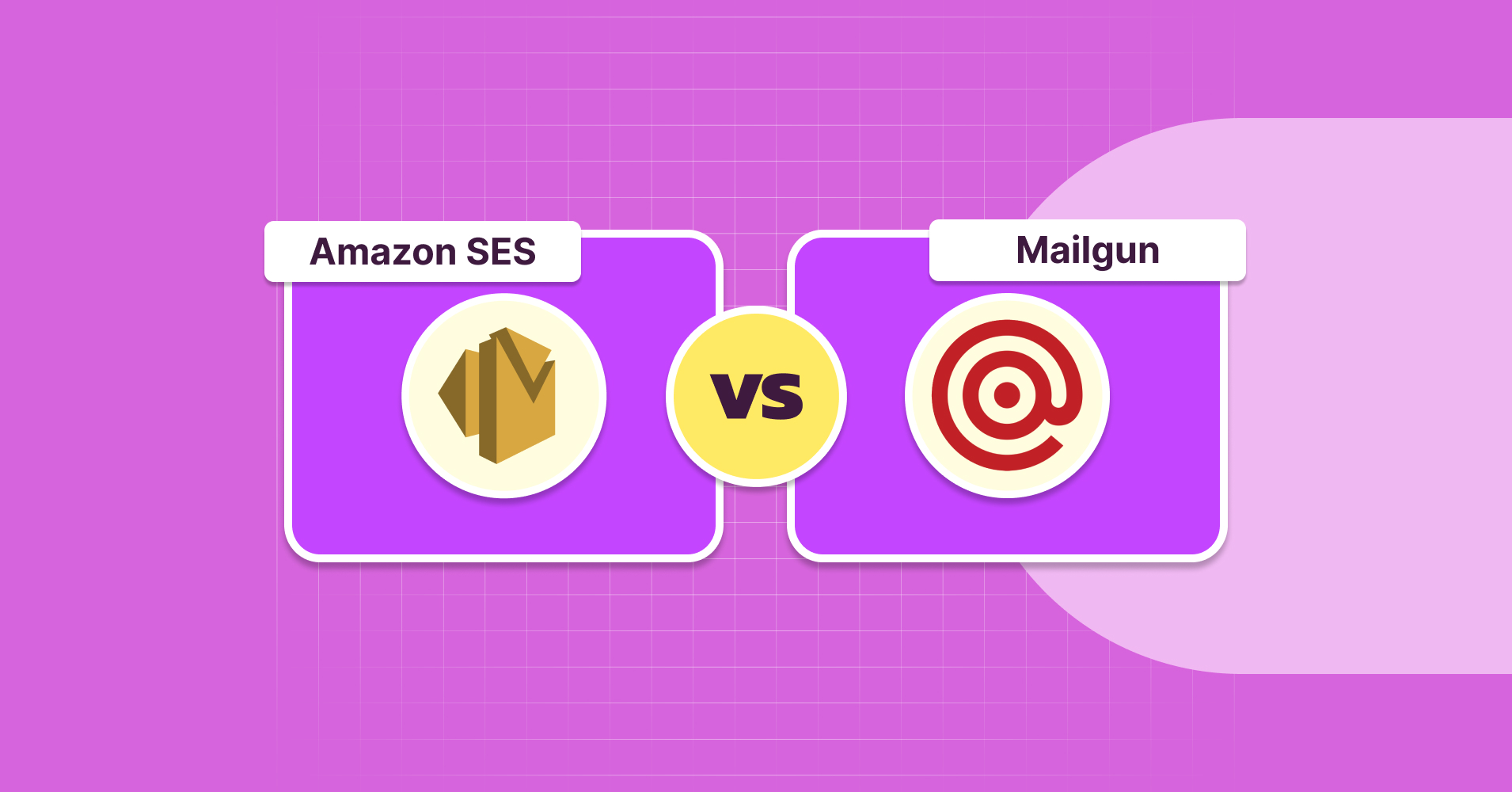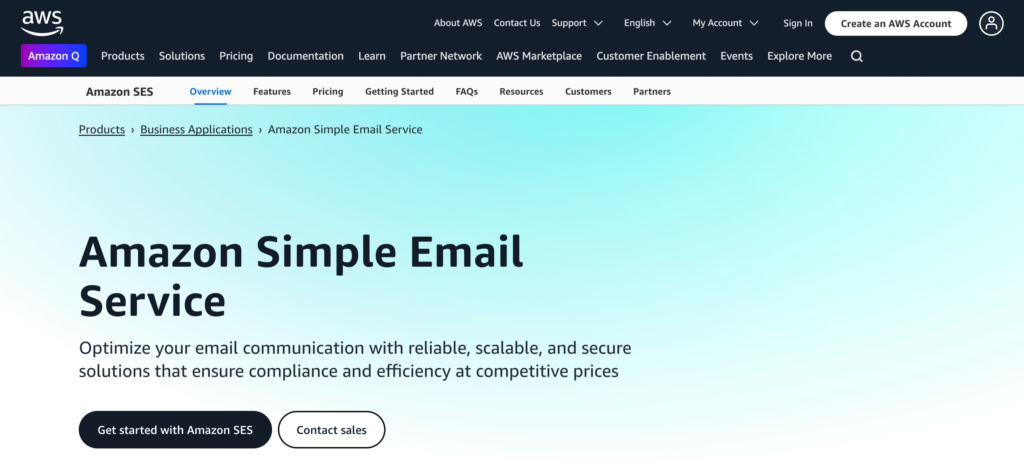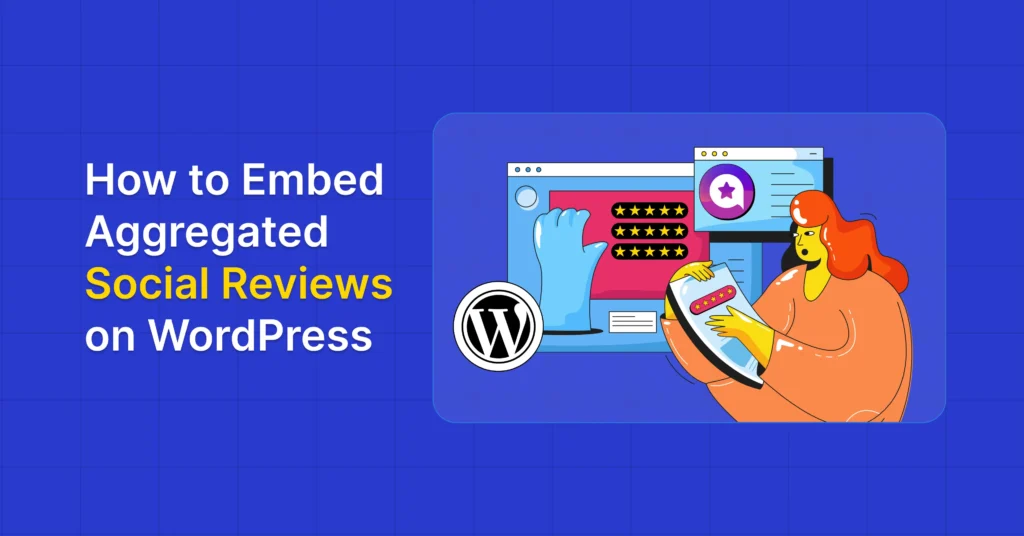
Amazon SES vs. Mailgun: SMTP Services Compared
When it comes to delivering emails effectively—whether for transactional notifications, marketing campaigns, or customer updates—choosing the right SMTP service is important.
Many websites, ecommerce platforms, and even WordPress users rely on third-party email services to ensure their messages reach inboxes rather than spam folders. Two popular options in this space are Amazon SES and Mailgun.
If you’re setting up email delivery for your website or diving deeper into email marketing, you’ve likely encountered the challenge of picking the right SMTP service.
That’s why we’re here to help! In this comprehensive comparison, we’ll discuss Amazon SES vs. Mailgun, exploring their features, pricing, ease of use, and more so you can decide which one fits your needs best.
So, let’s get started!
What is Amazon SES?
Amazon SES, part of Amazon Web Services (AWS), is a cloud-based email-sending service designed for businesses and developers. It’s built to handle both transactional and marketing emails at scale, offering a cost-effective SMTP relay and API-driven solution.

Amazon SES stands out for its scalability and affordability, making it ideal for startups, small businesses, and large enterprises alike. It provides tools like email authentication (DKIM, SPF), deliverability monitoring, and bounce/complaint tracking, ensuring your emails reach their intended recipients.
| Pros | Cons |
| Provide Payasyougo pricing model | The steeper learning curve for beginners |
| Flexible SMTP and API options | Limited builtin email marketing features |
| High scalability for large email volumes | Requires manual setup for advanced configurations |
| Robust deliverability tools | No A/B Testing or email previews for cam |
| Seamless integration with AWS service |
What is Mailgun?
Mailgun, on the other hand, is a developer-friendly transactional email service that’s gained popularity among over 225,000 companies worldwide. Acquired by Sinch in 2021, Mailgun focuses on providing powerful APIs and SMTP relay options for sending, receiving, and tracking emails.

It’s particularly well-suited for developers who need granular control over their email workflows. Mailgun excels in email validation, deliverability optimization, and detailed analytics, all while maintaining a user-friendly approach.
It supports libraries in languages like Python, Ruby, and PHP, making it a favorite among tech-savvy users and businesses with custom-built applications.
| Pros | Cons |
| Developer-friendly APIs | Customer support can be inconsistent |
| Excellent email validation tools | Requires technical expertise for advanced features |
| Fast and reliable email delivery | Some advanced tools cost extra, which can add up |
| Comprehensive analytics and logs | Occasionally, emails might still end up in spam |
| Supports both transactional and marketing emails |
Detailed Comparison: Amazon SES vs. Mailgun
To help you choose between Amazon SES and Mailgun, let’s break down the comparison across key criteria: infrastructure, ease of use, integrations, deliverability, analytics, pricing, and customer support.
Infrastructure
Amazon SES: Offers both SMTP relay and a RESTful API, giving users flexibility in how they send emails. As part of AWS, it leverages Amazon’s global infrastructure for high reliability and low latency.
Mailgun: Also provides SMTP and a RESTful API, with a focus on developer-friendly integration. It’s built to handle transactional emails at scale and is backed by a robust cloud-based system.
Ease of Setup
Amazon SES: Setup can be straightforward if you’re familiar with AWS. However, new users may find the initial configuration—such as domain verification and moving out of the “sandbox” mode—slightly technical. It’s not as plug-and-play as some competitors.
Mailgun: Designed with developers in mind, Mailgun offers a quick setup process if you’re comfortable with APIs or SMTP credentials. Nontechnical users might find it less intuitive due to its focus on customization.
Integrations
Amazon SES: It integrates seamlessly with other AWS services, making it a natural fit for businesses using AWS tools. It also supports third-party platforms like WordPress (via plugins), but advanced integrations may require custom coding.
Mailgun: Offers powerful APIs that integrate easily into custom applications, CRM’s, and ecommerce platforms. Prebuilt integrations are available for tools like WordPress, Shopify, and Slack, though some setups may need additional work.
Email Deliverability
Amazon SES: Known for excellent deliverability, SES provides tools like dedicated IPs (via additional setup), DKIM signing, and bounce/complaint management. However, achieving optimal deliverability may require manual tuning.
Mailgun: This excels in deliverability with features like email validation, spam filter avoidance, and detailed reporting. It also offers dedicated IPs and automated tools to enhance inbox placement.
Analytics and Reporting
Amazon SES: Provides basic analytics, including delivery rates, bounces, and complaints, through the AWS console or CloudWatch. For deeper insights, you’ll need to integrate with other AWS tools.
Mailgun: Offers in-depth analytics, including email logs, tracking for opens/clicks, and deliverability reports. Its dashboard is more comprehensive out of the box.
Pricing and Plans
Pricing is often a deciding factor, so let’s compare the two based on cost and value.
Amazon SES Pricing
Amazon SES is one of the most affordable SMTP services available:
- Pay-as-you-go: $0.10 per 1,000 emails sent (after the first 62,000 emails/month free if sent from an AWS instance)
- Attachments: $0.12 per GB of data
- Receiving emails: $0.10 per 1,000 emails received
- No monthly subscription fees—just pay for what you use
Mailgun Pricing
Mailgun operates on a tiered subscription model:
- Free Plan: 5,000 emails/month for 3 months, then drops to 1,000 emails/month.
- Foundation Plan: $35/month for 50,000 emails, with basic features.
- Scale Plan: $90/month for 100,000 emails, including advanced features like 7-day log retention and dedicated IPs.
For 50,000 emails, Mailgun costs $35/month on the Foundation plan.
Customer Support
Amazon SES: Offers support through AWS’s ticketing system, with premium options (phone, chat) available via paid AWS Support plans. Response times can vary.
Mailgun: Provides ticket, chat, and email support, with priority options on higher tier plans. Some users report inconsistent response quality.
Email Templates
Amazon SES: Lacks built-in email templates—you’ll need to create your own or integrate with a third-party tool for marketing campaigns.
Mailgun: It offers a limited selection of templates and a template builder API, but it’s not as robust as dedicated marketing platforms.
Final Verdict: Amazon SES vs. Mailgun
Choosing the right SMTP service depends on your priorities. Amazon SES is the most cost-effective option, ideal for high email volumes and seamless AWS integration, though it requires a learning curve.
If you need developer-friendly APIs, detailed analytics, and email validation, Mailgun is a better choice, offering more automation and prebuilt features at a premium.
For small businesses on a budget, Amazon SES is perfect, while Mailgun suits those needing advanced customization. Both handle large-scale email delivery, but your decision should be based on budget, technical expertise, and email needs.
If you are still confused, read our best transactional email services for WordPress.
Wish you all the best!

Jhorna Rani Gope
Meet Jhorna Gope, a passionate Digital Marketer and content-writing enthusiast. Along with this, she loves exploring new things with tech world, planting trees, and cherishing time with her family.
Table of Content
Subscribe To Get
WordPress Guides, Tips, and Tutorials












Leave a Reply